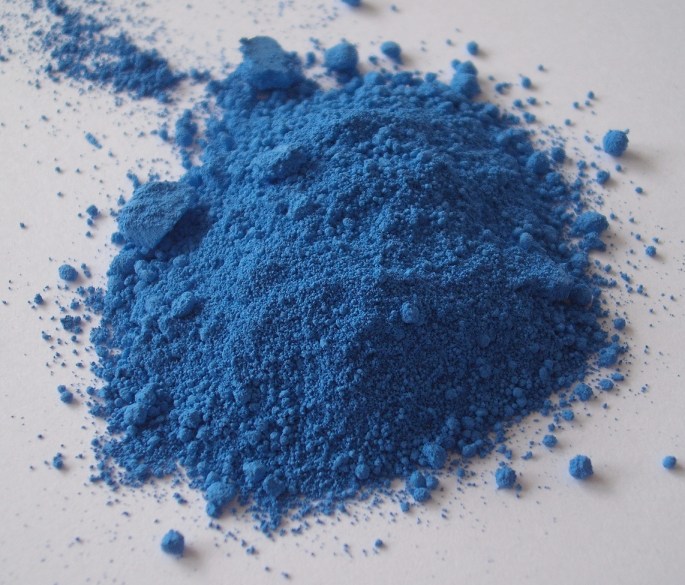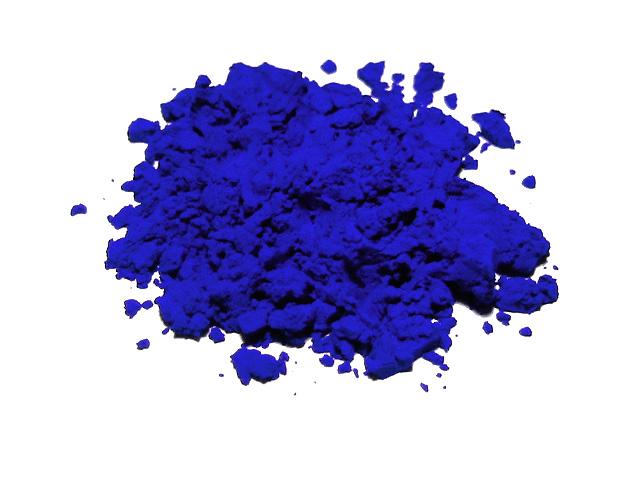What is the Difference Between Cobalt Blue and Ultramarine Blue
The key difference between cobalt blue and ultramarine blue is that cobalt blue is typically cooler, whereas ultramarine blue is warmer.
Cobalt blue is a type of blue pigment that is made from sintering cobalt(II) oxide and aluminum(III) oxide at a high temperature around 1200 Celsius degrees. Ultramarine blue is a deep blue color pigment consisting primarily of zeolite-based minerals, including small amounts of polysulfides. Moreover, cobalt blue is a semi-transparent pigment, while ultramarine blue is a transparent pigment.
CONTENTS
1. Overview and Key Difference
2. What is Cobalt Blue
3. What is Ultramarine Blue
4. Cobalt Blue vs Ultramarine Blue in Tabular Form
5. Summary – Cobalt Blue vs Ultramarine Blue
What is Cobalt Blue?
Cobalt blue is a type of blue pigment that is made from sintering cobalt(II) oxide and aluminum(III) oxide at a high temperature around 1200 Celsius degrees. By chemical means, it is cobalt(II) oxide-aluminum oxide or cobalt(II) aluminate. Comparatively, this pigment is lighter and less intense than Prussian blue pigments. Moreover, it is extremely stable and used as a coloring agent historically for ceramics, jewelry, and paint. At early times, this coloring agent was used in Chinese porcelain in impure forms.

Figure 01: Cobalt Blue Pigment
When ingested or inhaled, cobalt blue is toxic. Therefore, we need to use appropriate precautions when using this pigment in order to avoid any internal contamination and to prevent cobalt poisoning. Naturally, cobalt blue can be found as inclusions in sapphires from a single site.
What is Ultramarine Blue?
Ultramarine blue is a deep blue color pigment consisting primarily of zeolite-based minerals, including small amounts of polysulfides. This pigment was made originally by grinding lapis lazuli into a powder. For Renaissance painters, this was the finest and most expensive blue pigment available. It was often useful for the robes of the Virgin Mary, which symbolized holiness and humility. Until the invention of synthetic ultramarine, this pigment remained extremely expensive.

Figure 02: Ultramarine Blue
Naturally, ultramarine blue occurs as a proximate component of lapis lazuli consisting of a blue cubic mineral known as lazurite. The major component of this color pigment is a complex sulfur-containing sodium-silicate. This component makes ultramarine the most complex of all mineral pigments.
In the manufacture of ultramarine blue, the major raw materials that are used include white kaolin, anhydrous sodium sulfate, anhydrous sodium carbonate, powdered sulfur, and powdered charcoal. In the production process, the steps include the creation of reducing conditions in the furnace by sulfur, carbon, and organic substances, oxidization of sulfide to get disulfide molecules or chromophores, heating this mixture in a kiln followed by the grinding and washing of the resulting product.
What is the Difference Between Cobalt Blue and Ultramarine Blue?
Cobalt blue is a type of blue pigment that is made from sintering cobalt(II) oxide and aluminum(III) oxide at a high temperature around 1200 Celsius degrees. Ultramarine blue is a deep blue color pigment consisting primarily of zeolite-based minerals, including small amounts of polysulfides. The key difference between cobalt blue and ultramarine blue is that cobalt blue is typically cooler whereas ultramarine blue is warmer. Moreover, cobalt blue is a semi-transparent pigment, while ultramarine blue is a transparent pigment.
Below is a summary of the difference between cobalt blue and ultramarine blue in tabular form for side by side comparison.
Summary – Cobalt Blue vs Ultramarine Blue
Cobalt blue and ultramarine blue are important blur-colored pigments. The key difference between cobalt blue and ultramarine blue is that cobalt blue is typically cooler, whereas ultramarine blue is warmer. Moreover, cobalt blue is a semi-transparent pigment, while ultramarine blue is a transparent pigment.
Reference:
1. “Ultramarine Blue.” DANIEL SMITH Artists’ Materials, 14 Oct. 2021.
Image Courtesy:
1. “Cobalt Blue” By FK1954 – Own work (Public Domain) via Commons Wikimedia
2. “Ultramarine pigment” (Public Domain) via Commons Wikimedia
ncG1vNJzZmivp6x7pbXFn5yrnZ6YsqOx07CcnqZemLyue9ahmK1lmah6tbTEZpuinpaav6a6wp5km52krLKmuoycppuZnKl6o7jUnmSappRiwq3A0ZqkmqqZo7JursuunGg%3D